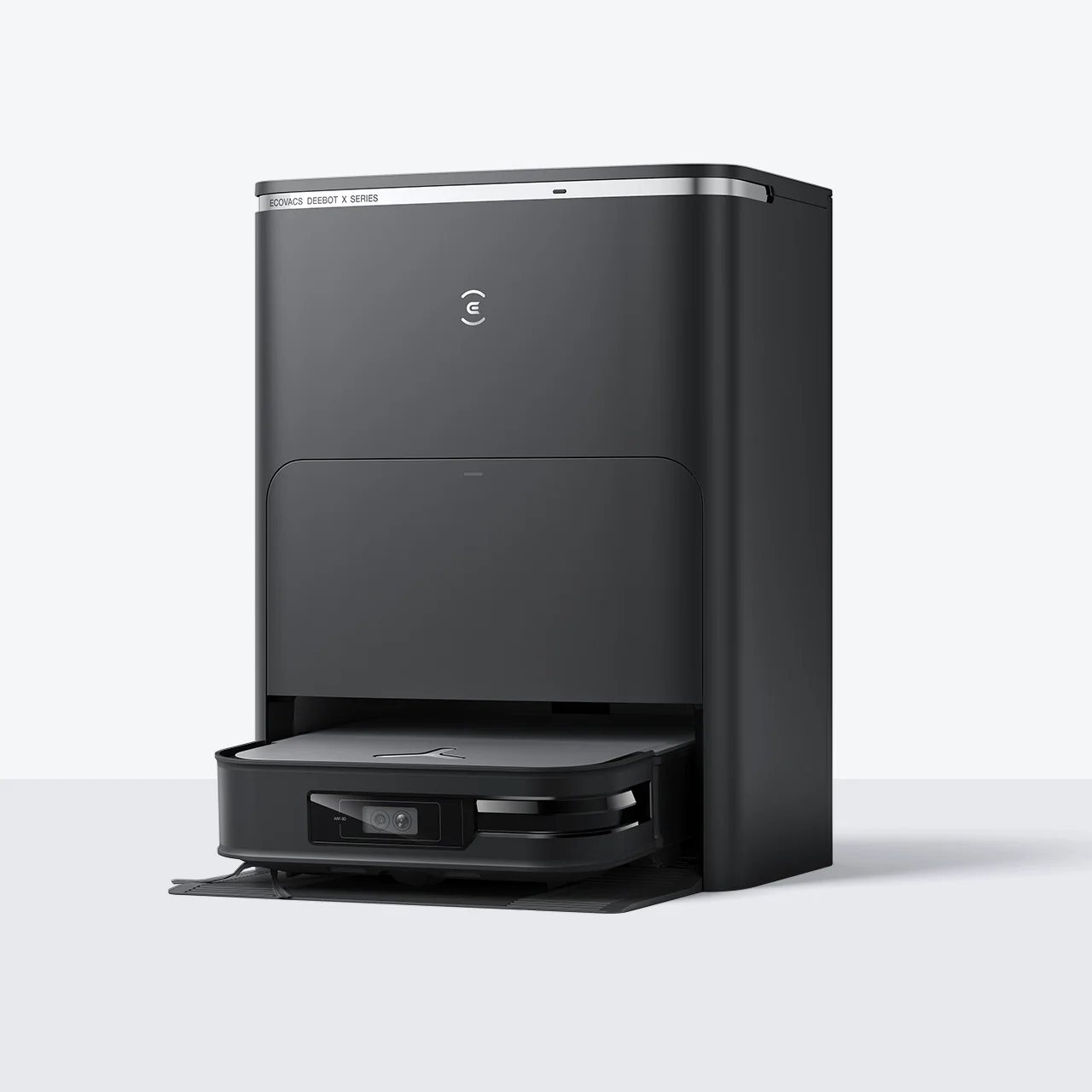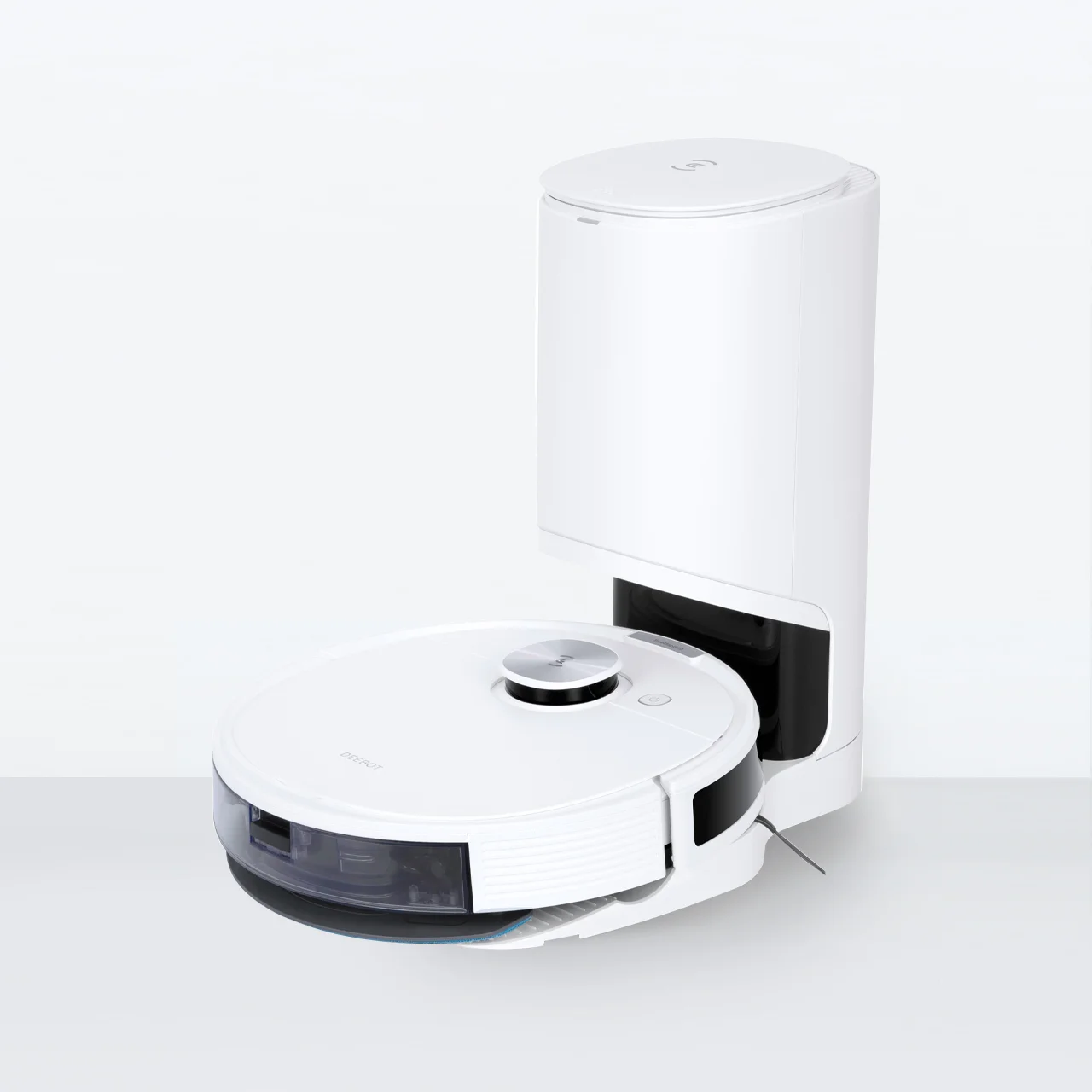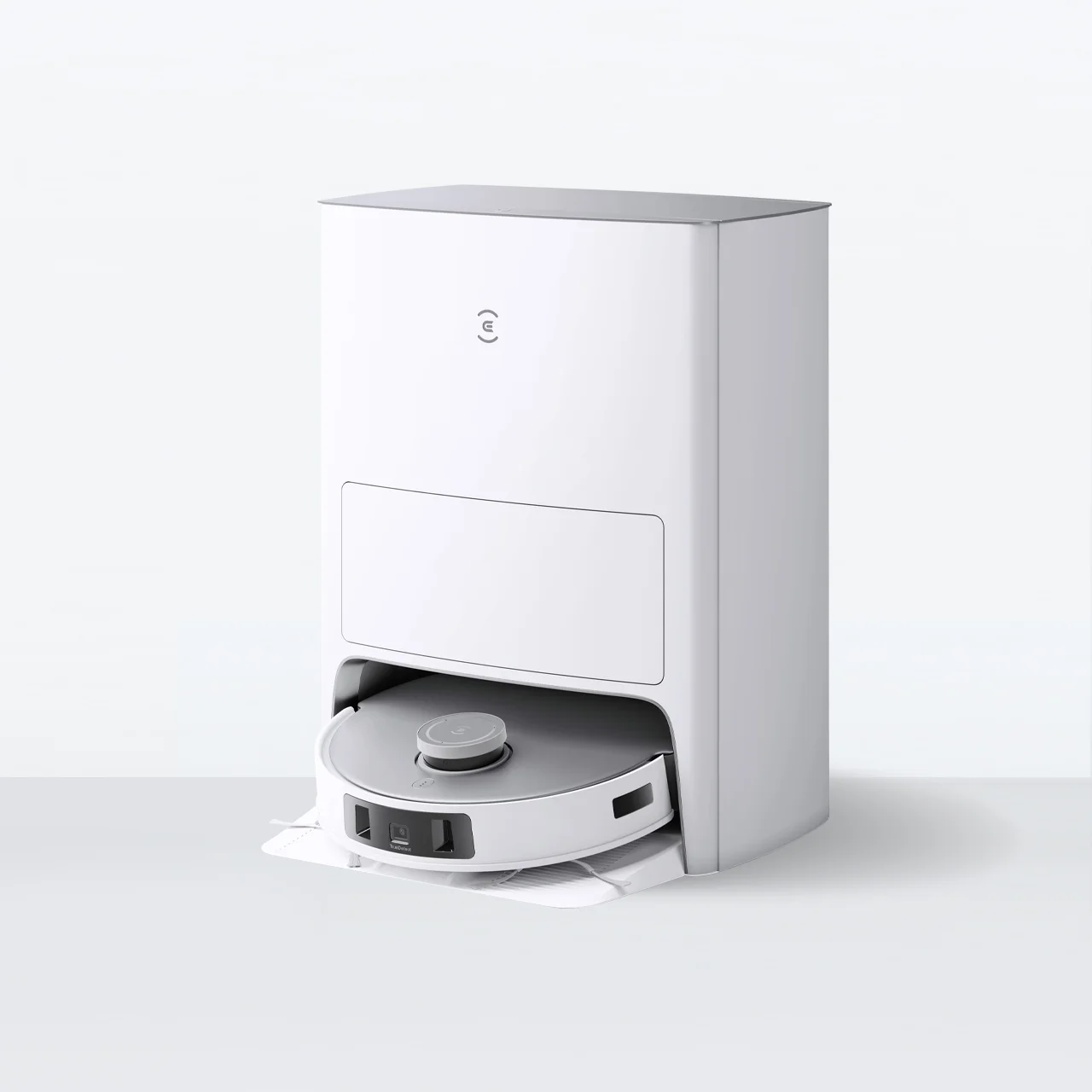
The allure of robotic vacuum cleaners isn't surprising, considering the convenience they offer in our busy lives. From the early days of bulky, manual vacuum cleaners to the sleek, automated models of today, the evolution of vacuum technology has been remarkable. According to Statista Research Department, the global robotic vacuum market is projected to balloon to USD 4.98 billion (approximately AUD 7.62 billion) by 2025 - reflecting a growing trend towards this smart home device. But can a robot vacuum with mop completely replace a normal vacuum? Before you immerse yourself in the trend, it's essential to consider both sides of the coin. Here's our take on what you need to know to decide if a smart vacuum is the best option for you.
Understanding Robot Vacuums
Normal vacuums need to be taken from room to room, and their settings have to be changed manually depending on the user’s requirements. If you're wondering how robot vacuum cleaners work, they move through a living space autonomously and clean based on a user's programmed and customised preferences. The compact size of these smart devices makes it easy for them to reach under furniture and navigate.
Some robot vacuum cleaners also come with mops, allowing them to sweep for dust and mop to remove stains. This makes them perfect for hard surfaces like wood and tile, but not necessarily suitable for carpets or rugs. They also need attention in terms of maintenance, especially when it comes to refilling water tanks and changing cloths, although some are equipped for self-cleaning. Yet, their advantages are clear: they reduce the circulation of dust and allergens, save significant cleaning time, operate quietly, and leave floors spotless, while you monitor and control them remotely.
An Overview of Regular Vacuum Cleaners

Normal vacuum cleaners, a staple in many homes, are available as upright, canister, and handheld models. Upright vacuums excel in deep cleaning carpeted floors, canister vacuums offer flexibility for hard-to-reach areas, and handheld ones are ideal for quick spot cleaning. The main advantages of these vacuums are their powerful suction for deep-cleaning even plush carpets and portability for moving around the house. However, they require manual effort and may not be as durable for heavy use in large homes or houses with multiple floors.
Traditional vacuums are especially suited for homes with extensive carpeting and those who prefer a hands-on cleaning approach. In contrast to regular vacuums, robot vacuums use sensors and robotic drives along with programmable cleaning routines and controllers to provide users a contact-free cleaning solution with minimal supervision.
Best DEEBOT Robot Vacuum with Mops
If you are considering bringing a smart vacuum and mop home, you shall not miss these 3 models in our DEEBOT series.
DEEBOT X5 PRO OMNI

This premium robot vacuum cleaner from ECOVACS has a host of new features to ensure that the device tackles even the toughest of stains — most notably its 12,800Pa strong suction power and 15mm Mopping Pad Auto-lift capability. The DEEBOT X5 PRO OMNI is among the first ECOVACS models with the AINA 2.0 Intelligent Navigation Mode — an advanced navigation and obstacle avoidance system that combines deep learning and reinforcement learning technologies. This facilitates the Instant Re-Mop feature, which intelligently identifies significant stains , adjusts water levels accordingly, and makes several passes over the stain to make sure it’s cleaned without any manual intervention. At 95mm high, this slim robot vacuum — effortlessly goes under low furniture and narrow passages for comprehensive cleaning. And if you're looking for a robot vacuum with LiDAR navigation, this model is ready to swiftly navigate complex indoor environments, easily avoiding obstacles like playful children and pets.
Shop DEEBOT X5 PRO OMNI Now
DEEBOT T30S PRO

The DEEBOT T30S PRO is not just one of the newer additions to the DEEBOT family of robotic vacuums with mops — it also features plenty of advanced technologies developed by ECOVACS. Its TruEdge Technology allows the mop plate to extend constantly for full coverage, and its Continuous Variable Mop Extender and the 3D Omni-Directional Perception Sensors enable the vacuum to reach every nook and cranny. The gadget also uses its Auto-lift Mopping System to raise the mopping plates to up to 9mm when it detects a carpet clears thresholds effortlessly, ensuring uninterrupted cleaning. The Intelligent Deep Mopping system customises cleaning cycles based on cleanliness levels, while Hot Air Drying prevents bacteria growth and unpleasant odours. The OMNI station uses water at temperatures of 70°C to dissolve dirt and stains on the mop pads to eliminate cross-contamination. Shop DEEBOT T30S PRO Now
DEEBOT N20 PRO PLUS

This strong-performance smart vacuum has several features to keep your floors gleaming. For starters, its OZMO Pro 2.0 Vibrating Mopping System uses high-frequency vibration to swiftly eliminate stubborn stains, while its composite material mopping pad locks in dirt. The 180ml water tank of the DEEBOT N20 PRO PLUS ensures continuous wetness during the mopping process, so you can be assured that your floors will be spotless once the gadget is done cleaning. Shop DEEBOT N20 PRO PLUS Now
How Do Robot Vacuums Compare To Traditional Vacuums?
Cleaning Efficiency
When it comes to cleaning efficiency, both robotic vacuum with mops and traditional vacuums have their strengths. Traditional vacuums rely on strong suction power, efficiently lifting dirt and debris from various surfaces, including carpets and hardwood floors. Their effectiveness on fluffy carpets is notable, but caution is advised on wet surfaces to avoid damage.
On the other hand, auto vacuum with mops combine suction with mopping capabilities . For instance, DEEBOT X2 OMNI features OZMO Turbo 2.0 Rotating Mopping system, applies consistent pressure on the chenille fabric mop to the floor for deep cleaning. Their compact design allows easy access to hard-to-reach areas like under beds and sofas. Other smart features such as self-emptying, remote control and voice control further enhanced the cleaning experience. However, they might struggle on carpets, and cause water damage on carpeted areas.
Ease of Use
In terms of ease of use, automatic vacuum with mops have more advantages over traditional vacuums. With smart features, including compatibility with apps that allow users to set cleaning schedules and create virtual barriers, robotic vacuum and mops can also be controlled remotely, integrated with smart home systems, and respond to voice commands, like Alexa or Siri. Their true appeal lies in their autonomy – they navigate, clean, and even self-clean without needing users' intervention, offering a hands-free cleaning experience .
In contrast, despite often being wireless and user-friendly, traditional vacuums still require manual effort. Users must physically push them around to clean, which demands more time and effort compared to the automated convenience offered by their robotic counterparts.
Maintenance and Durability
Many robot vacuums with mops are paired with self-cleaning stations to automate much of the maintenance process. Take DEEBOT’s OMNI stations as an example, they auto-empty dustbins to large dust bags that hold debris for months, clean and dry mop heads , and refill water tanks, ensuring the device is ready for the next clean. While self-cleaning vacuums require less frequent checks, regular maintenance like emptying the dust bag and unclogging brushes is recommended to extend their lifespan. They also notify users about malfunctions and part replacements through their app.
On the other hand, traditional vacuums need more hands-on upkeep. They require frequent emptying after each use to prevent overfilling and regular cleaning of mop cloths to avoid bacteria and odours.
However, when it comes to repair costs, fixing an automatic vacuum with a mop tends to be pricier than repairing traditional models.
Noise Level

Traditional vacuums generally operate at higher noise levels , usually ranging between 70 and 80 dB, sometimes even higher depending on the model and mode of operation. This can be particularly noticeable and disruptive when used for extended periods or in quieter environments.
In comparison, robotic vacuums with mops are designed to be much quieter. DEEBOT T20 OMNI, for instance, operate at a lower noise level of around 67 dB for sweeping and 69 dB for combined sweeping and mopping. These smart vacuum cleaners often incorporate noise-reduction features like soundproofing materials . Plus, their intelligent programming allows for quieter, yet efficient operation.
Storage
Regular vacuum cleaners, being larger and bulkier than their robotic counterparts, have the capacity to collect more debris in one session. However, this also means they demand more storage space. Typically, these vacuums need to be stored either horizontally or upright , with common storage areas being closets, laundry rooms, or garages.
Meanwhile, smart vacuums with mops are more compact and require way less storage space . Store your device and compatible docking stations in an easily accessible spot for hassle-free charging during cleaning sessions.
Versatility and cleaning modes
Robot vacuums come with various options, such as spot cleaning, edge cleaning, and automatic or scheduled cleaning, enabling them to adapt to various tasks autonomously. Many models are equipped with sensors to detect dirt, navigate rooms, work around no-go zones, and avoid obstacles, making them versatile when it comes to cleaning diverse environments.
However, traditional vacuums often come with interchangeable attachments, like crevice tools and upholstery brushes, which allow more targeted, hands-on cleaning. Although they lack automation, traditional vacuums provide greater manual control, making them ideal for deep cleaning specific areas or reaching under furniture where robots may struggle.
Suction power
Normal vacuums generally deliver greater suction power compared to most auto vacuums, making them ideal for deep cleaning thick carpets and stubborn debris. This robust power allows them to remove dirt and allergens deeply embedded in rugs and carpets.
Even though newer models of robot vacuums are more powerful than their predecessors, they still have less suction, which impacts their handling of thicker carpets or very fine particles. However, they are highly efficient on hard floors and low-pile carpets, with many models now featuring adjustable power settings. Some high-end robot vacuums also offer impressive suction levels, which, combined with their convenience, makes them ideal for daily maintenance.
Allergy and Filtration System
Traditional vacuums often come equipped with advanced HEPA filters to trap allergens like pollen, dust mites, and pet dander, which is crucial for allergy sufferers. These systems can be manually cleaned or replaced, ensuring consistent filtration efficiency.
Robot vacuums, on the other hand, also feature HEPA or high-efficiency filters in many models, but these filters may need frequent maintenance as they are generally smaller than those in conventional vacuums. While effective for everyday dust management, smart vacuums might fall short in filtration strength compared to traditional models.
Can a Robot Vacuum Replace a Normal Vacuum?
For many homes, a robot vacuum can replace a regular vacuum and handle daily cleaning tasks, with a normal vacuum needed only for deeper cleans. The choice between robotic vacuum cleaners and traditional models isn't just about efficiency, but also about user preferences and lifestyle . Traditional upright vacuums, known for their deep cleaning capabilities, are ideal for heavy-duty tasks and homes with carpets , where they can remove deeply embedded dust and dirt. However, they demand manual operation, which can be time-consuming and physically demanding.
Alternatively, automatic vacuum with mops offer convenience and ease , especially for routine cleaning. They automate both vacuuming and mopping, reducing physical demand. Their smart sensors and algorithms allows for more efficient cleaning than regular vacuums. Their apps are also user-friendly for remote control. Ultimately, the decision hinges on your needs and how much manual involvement you're willing to invest in the process.
Are Robot Vacuums Better Than Regular Vacuums?
Robot vacuums are great for convenience and efficient upkeep, especially on hard floors and light carpets. Their automatic, routine cleaning schedules help maintain cleanliness with minimal effort, making them a great choice for busy households. On the other hand, regular vacuums often perform better for deep cleaning, particularly on thicker carpets or heavily soiled areas, thanks to their stronger suction and specialised attachments. While robot vacuums might miss some details a traditional cleaner would catch, they make up for it by consistently keeping floors tidy.
Related Products









